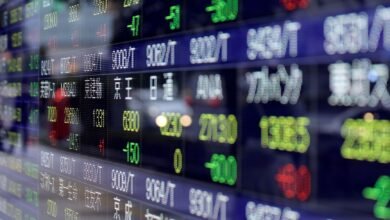Emerging market bond markets have surged 15% year-to-date, with traders betting that Fed rate cuts will provide further momentum.

According to information from Zhitong Finance, asset management managers and strategists are generally betting that the Federal Reserve’s move to restart the rate-cutting cycle will further fuel what is shaping up to be the largest rally in emerging market bonds in recent years.
Year-to-date, the benchmark index for dollar-denominated local government bonds of developing countries has delivered a 15% return to investors, on track for its best annual performance since 2017. The trigger for this rally was concerns over the U.S. economic outlook stemming from the Trump administration’s trade war and frequent policy shifts, which prompted investors to shift some of their capital into other markets.
Now, after pausing interest rate hikes for nine months, the Federal Reserve has resumed cutting rates, further stimulating investors to seek higher-yielding assets.
Local currency bonds become highly sought-after; carry trades deemed “irreplaceable”
If the U.S. dollar continues to weaken, returns on bonds denominated in local currencies will be further amplified—this type of asset has become a top choice for fund managers at institutions such as Jeffrey Gundlach’s DoubleLine Capital and JPMorgan Asset Management. Neuberger Berman is bullish on emerging market currencies and local bonds; Bank of America, meanwhile, believes that emerging market carry trades (borrowing in low-interest-rate countries to invest in high-yield markets) will remain “irreplaceable” for the remainder of the year.
“Investors’ willingness to allocate to non-U.S.-dollar assets is very clear,” said Patrick Campbell, portfolio manager at Morgan Stanley Investment Management. “We are seeing a surge in interest in strategies that track benchmarks like emerging market local bonds—a level of enthusiasm we haven’t seen since 2012.”
The logic behind these positions is that the Fed’s accommodative policies will continue to weigh on the dollar, and currency appreciation will boost returns on bonds denominated in that currency. At the same time, it could also activate carry trades funded in U.S. dollars.
“The Federal Reserve’s actions further support the view of ‘a weaker dollar and lower rates ahead,’” noted Nathan Tufte, senior portfolio manager at Manulife Investment Management. “Both factors are positive for emerging market equities and bonds.”
The broad-based rally in emerging markets is partly due to the erratic tariff policies of the Trump administration—earlier this year, the US dollar recorded its largest decline since the early 1970s. Meanwhile, interest rates in developing countries remain significantly higher than in the United States: many emerging market central banks, concerned about inflation, have adopted a cautious stance toward easing policies, making their asset yields more attractive.
Driven by these dual factors, emerging market government bonds have outperformed most global fixed-income assets: a 15% gain is more than double the return of US high-yield corporate bonds (junk bonds) and far exceeds the 5.4% rise in the Bloomberg US Treasury Index. Brazil, Mexico, Colombia, Hungary, and South Africa are leading the pack, with returns exceeding 23% year-to-date.
Risks persist, but the Fed’s accommodative stance carries greater weight.
Of course, the current magnitude of the rally may limit future return potential. A stronger dollar driven by ‘cooler expectations for Fed rate cuts’ or ‘escalating geopolitical tensions’ could weigh on market sentiment. The sell-off in Turkey earlier this year and the sharp deterioration in Argentina last week (which forced the central bank to deplete its foreign exchange reserves) highlight how political instability can quickly overturn emerging markets.
However, analysts and investors believe that these risks will be offset by the positive effects of the Fed’s previous monetary policy decisions. After announcing a 25-basis-point rate cut last week, the Federal Reserve also signaled that it would likely cut rates twice more before the end of the year.
One reason is that emerging market central banks may follow suit with rate cuts, providing additional support to bonds. Inflation-adjusted yields (real yields) in places like South Africa and Colombia may continue to attract carry trade inflows.
Ian Stannard, Chief Investment Officer for International Fixed Income at JPMorgan Asset Management, stated that historical data shows that after Federal Reserve rate cuts, emerging market bond markets deliver average returns between 6% and 8%. The ‘JPMorgan Global Bond Opportunities Fund,’ which he co-manages, remains overweight in emerging markets.
Valerie Ho, a portfolio manager at DoubleLine Capital, revealed that her fund has increased its positions in Brazil, South Africa, and Hungary—markets that stand to benefit from the Fed’s policy pivot and a weaker dollar. ‘In this context, we are happy to maintain these positions.’
Rising returns continue to attract inflows into emerging market funds. Citing EPFR data, Bank of America reported that, as of September 17, emerging market debt-focused funds saw net inflows of approximately $300 million during the week, marking the 22nd consecutive week of inflows. Year-to-date net inflows have reached $45 billion.
Kathy Hepworth of PGIM Fixed Income said that she has partially taken profits given the strong rally in hard currency bonds this year; however, the head of emerging market debt still maintains a “short U.S. dollar” bias and remains overweight high-yield currencies.
“The current environment continues to support emerging markets,” Hepworth said. “The trend is very clear.”
Credit: Source link






